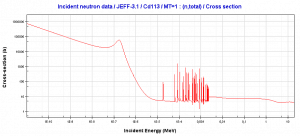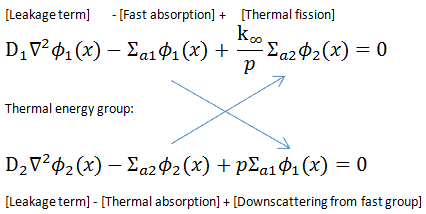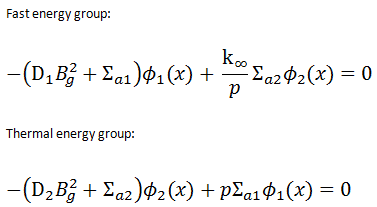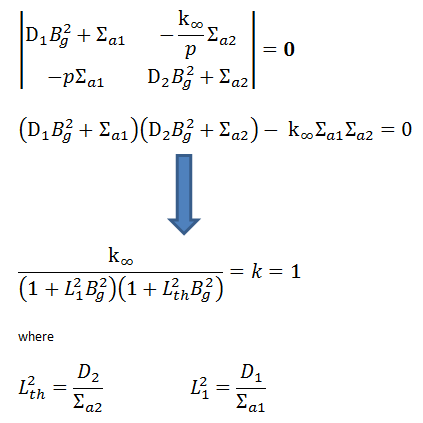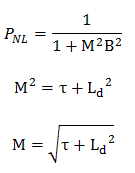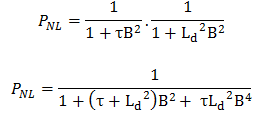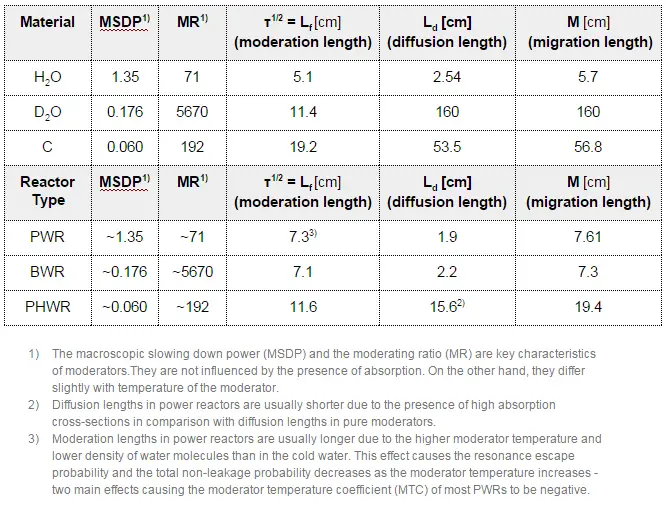We have used a very important assumption in previous sections that all neutrons are lumped into a single energy group. These monoenergetic neutrons are emitted and diffuse at thermal energy (0.025 eV). In a thermal reactor, the neutrons have distribution in the energy. The spectrum of neutron energies produced by fission varies significantly with certain reactor designs. The figure illustrates the difference in neutron flux spectra between a thermal reactor and a fast breeder reactor. Note that the neutron spectra in fast reactors also vary significantly with a given reactor coolant.
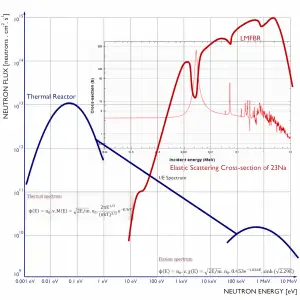
See also: Neutron Flux Spectra.
In general, free neutrons can be divided into many energy groups. The reactor physics does not need a fine division of neutron energies. The neutrons can be roughly (for purposes of reactor physics) divided into three energy ranges:
- Thermal neutrons (0.025 eV – 1 eV)
- Resonance neutrons (1 eV – 1 keV)
- Fast neutrons (1 keV – 10 MeV)
Even there are reactor computing codes that use only two neutron energy groups:
- Slow neutrons group (0.025 eV – 1 keV).
- Fast neutrons group (1 keV – 10 MeV).
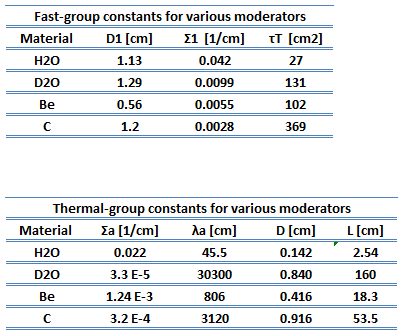 One of the most effective ways of calculating the neutron diffusion in thermal reactors is by the multigroup diffusion method. In this method, the entire range of neutron energies is divided into N intervals. All neutrons within each interval are lumped into a group, and in this group, all parameters such as the diffusion coefficients or cross-sections are averaged.
One of the most effective ways of calculating the neutron diffusion in thermal reactors is by the multigroup diffusion method. In this method, the entire range of neutron energies is divided into N intervals. All neutrons within each interval are lumped into a group, and in this group, all parameters such as the diffusion coefficients or cross-sections are averaged.
As an illustrative example, we will show a two-group diffusion equation and briefly demonstrate its solution. In this example, we consider a thermal energy group and combine all neutrons of a higher energy into a fast energy group.
In steady-state, the diffusion equations for the fast and thermal energy groups are:
The equations are coupled through the thermal fission term the fast removal term. In this system of equations, we assume that neutrons appear in the fast group due to fission induced by thermal neutrons (therefore Φ2(x)). In the fission term, k∞ is to infinite multiplication factor, and p is the resonance escape probability. The fast absorption term expresses neutrons that are lost from the fast group by slowing down. Σa1Φ1 is equal to the thermal slowing down density.
Consider the second equation (thermal energy group). Neutrons enter the thermal group as a result of slowing down out of the fast group. Therefore the term pΣa1Φ1 in this equation comes from the fast group. It represents the source of neutrons that escaped to resonance absorption.
To solve this system of equations we assume for a uniform reactor, that both groups of the fluxes in the core have a geometrical buckling Bg satisfying:
Since the geometrical buckling is the same for both the thermal and fast fluxes, the diffusion equations can be rewritten as:
Criticality Equation for Two-group Theory and Bare Reactor
The solution of this pair of homogeneous algebraic equations leads to a determinant of the coefficients, which have the following solution (using Cramer’s rule):
The previous equation is usually referred to as the criticality equation. In this equation, the terms
is known as the fast non-leakage factor and
is known as the thermal non-leakage factor.
For weakly absorbing media and according to Fermi Theory, the following relation can be aplied:
Flux Distribution for Two-group Theory and Bare Reactor
For a uniform reactor, the vanishing of the neutron flux on the boundary requires that the neutron flux in both groups satisfies:
Since the geometrical buckling is the same for both the thermal and fast fluxes, the thermal flux and the fast-flux are proportional to the bare reactor. It can be derived that:
